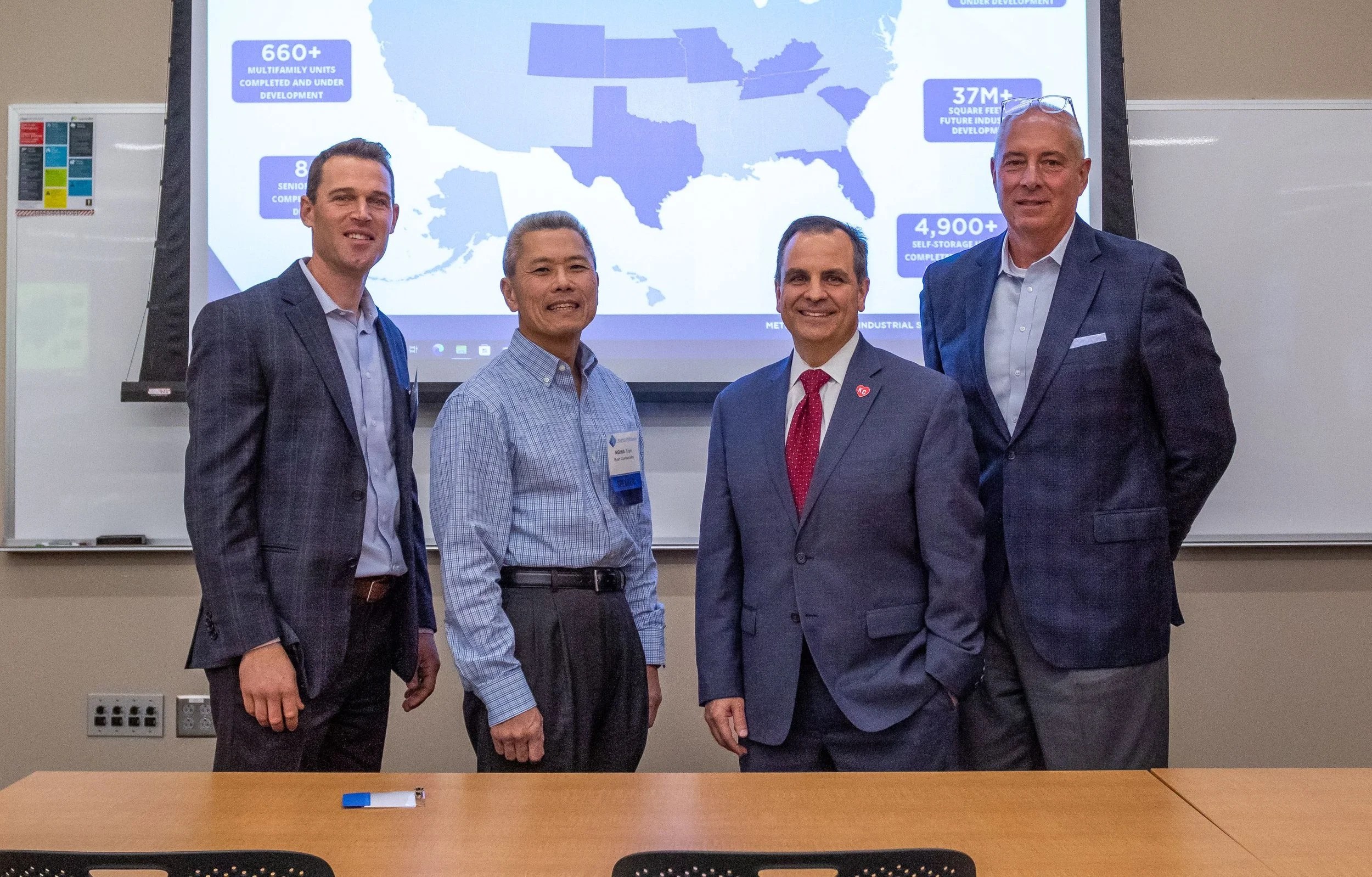The industrial market in Kansas City remains stable with a steady upward climb according to the panel of industrial market experts who spoke last week at MetroWire Media’s 2022 Industrial Summit held at Johnson County Community College’s Olathe Health Education Center in Olathe, Kan.
Panelists Michael Bell, senior vice president, Hunt Midwest; John Stafford, SIOR, executive vice president, Colliers International; and Nghia Tran, director of project development, Ryan Companies US, Inc., joined moderator Greg Martinette, president/CEO, Southwest Johnson County Economic Development Corporation, to discuss the current state of Kansas City’s industrial market and market challenges.
In southwest Johnson County alone, Martinette said there are 7 million SF of industrial buildings under construction, most of which are speculative.
“And there’s another about 14 million that are teed up to go right behind that. And that’s just one little corner of Kansas City,” said Martinette.
“I think Kansas City is pretty balanced right now with regard to supply and demand. Vacancy is a metric that we all watch. It’s interesting. I’ve been in the brokerage business for 15-16 years, and it’s been 6 percent every year. Literally. Things just don’t really change too much in Kansas City - which is good. That means we pay attention to fundamentals on the development side. We don’t get overbuilt,” said Stafford.
Martinette mentioned that a recent publication ranked Kansas City at number 23 among other cities for manufacturing, and he queried whether that ranking was something Kansas City should promote.
“For us, being in the central part of the United States, we have the advantage of reaching 90 percent of the domestic U.S. within two days of ground shipping, which is the cheapest form of getting product out or getting the product into a manufacturing facility. So I think that plays in our perspective of growing and doing well… Could we be better? I think yes; but, I think it’s good to be on that list and get that recognition for sure,” Bell said.
Although manufacturing prospects across several different industries have picked up in the last few months, Martinette said it can be difficult to satisfy the heavy utility requirements, especially electricity, that the manufacturers demand.
Tran said manufacturing companies with which he works want reliable power in both quality and quantity.
“In some cases, they would want to pull from two different grids or two substations so that they’re never without. A lot of municipalities and local utilities struggle with that… That’s the challenge right now for a lot of the utilities trying to get that reliability and trying to get the duel feed to the site,” said Tran.
“When you think about utilities, you only think about electricity and water and gas, but sometimes you forget the roadways is also a constraint in many, many ways. Transportation (is needed) to support the volume of traffic that’s coming to the facility,” Tran said.
Martinette said the strain on the electrical grid is going to be driving industrial site locations in the future.
“Even though the grid is strong here, we can’t get the parts to build it,” he said.
In addition, manufacturers are huge water users, and the region currently does not have the capacity to handle the demand, said Martinette.
“I think we need to be attracting and recruiting more manufacturing, but then we’ve got those challenges,” he said.
Stafford said that the market has seen unprecedented rent growth in the last year.
“Rents have probably risen at least 10 percent in the last year, and part of that is a trickle down from inflation, but part of that is just where rents need to be because of where interest rates are today,” said Stafford.
Bell said rent growth is a function of construction costs.
“You can almost tell which building was completed when or when it started based on the lease rates,” said Bell.
Martinette said some prospects may be putting on hold projects for the region while they see if mega-projects like the plant being built by Panasonic Energy of North America can find enough employees to fill the newly created jobs.
Stafford said the market is starting to see some second-generation space given back to the market, which hasn’t happened in a long time, as some companies re-evaluate their distribution networks.
“We’re seeing some consolidation. We’re seeing some expansion. From the construction side, whether you consolidate or you expand, or you close a plant, that capacity has to be replaced somewhere else. And, if they consolidate, that means they’re going to close down one facility, but they’re going to expand the production somewhere else. All of those projects still have to be done. The demand is there,” said Tran.
—————————————————————————-
Feature photo credit: Arch Photo KC. View the complete KC INDUSTRIAL SUMMIT photo album here.

